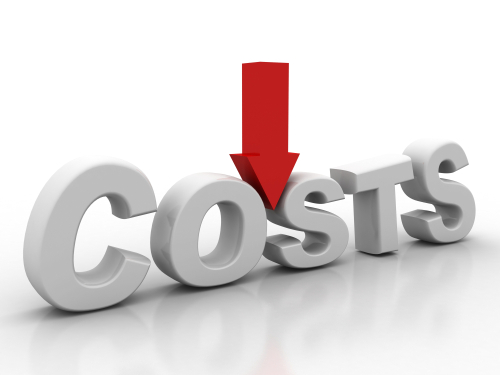Boost Your Business With Ronald's Book

Enter your email below to get my book for free:
Business is all about money. As any small business consultant will tell you, you need to maintain a positive cash flow to keep a healthy business that can pay bills. After all, small businesses are especially liable to cash flow problems.
Unfortunately, it's easy to fall into a massive cash flow problem after the slightest oversight, which is why so many businesses hire financing experts to prevent disaster.
Even if your business cash flow has been doing well for a while, you should still watch your cash flow forecast and learn to manage cash flow effectively, especially as a small business owner. Otherwise you'd be risking your livelihood.
But in case disaster strikes, do you know how to deal with cash flow problems in small business? That's what we'll cover in this article, so follow along for more useful tips and information.

As its name suggests, cash flow is an indicator of how much cash goes in and out of the company. More specifically, cash flow is the net between inflows (money coming in) minus outflows (spendings).
A positive cash flow is a sign of a profitable business. But when outflows exceed inflows, then it's losing money.
For small businesses, the most critical factors that affect cash flow are the accounts receivable from sales. If a company doesn't have paying customers, it won't survive.
To clarify some common confusion about cash flow, it's not the same as revenue or profits.
Revenue is the total amount of money coming into the business without factoring in spending or other expenses.
On the other hand, profit is the money left at the end of a fiscal period (month or year) after covering all business expenses.

Cash flow problems emerge when the business doesn't have enough cash (specifically, liquid cash) to pay off its expenses and liabilities.
Having a negative net cash flow for a brief period doesn't necessarily mean the business is struggling financially. Sometimes, a company has to make a large purchase or investment, which overshadows its profits. Other companies like summer resorts experience seasonal fluctuations, which can be deceptive of the company's actual state.
But when poor cash flow continues over an extended period, it's a sign of the company losing money.
Now for the main course of the article: the solutions to cash flow issues.
As there are many causes of business cash flow problems, some of which could be unique to your situation, we can't cover every possibility. But we'll talk about the most common ways to solve cash flow problems. Understanding how to deal with cash flow problems in small business can drastically increase the businesses likelihood of survival.

Small business owners should always encourage their customers to pay faster, especially if they experience cash flow problems. Also, an early payment can improve your cash flow and give you more options throughout the month.
And we know no one likes to send invoices. So you'll also be saving yourself and your employees a lot of hassle that usually goes into invoice factoring, waiting for clients to pay the invoices, and dealing with late payments.
If you have clients that pay you a fixed amount monthly, you can set up auto-billing so that the amount is consistently paid.
You could also let clients choose their payment day. Not everyone gets paid on the first day or even the first week of the month, so some might prefer to pay on a day of their choosing. So when you give your clients this option, you incentivize them to pay on time.
Lastly, you could offer discounts or other incentives to early-paying customers, especially long-term ones.
Paper cash is old-fashioned nowadays since digital and online payments are more convenient for most clients.
Accept credit cards in your store since it encourages customers to buy and can speed up payments. But make sure the credit card fees are worth it for your business.
You should also accept online payments. Clients find it easier to pay with their credit card from home than at the store. So encourage them by giving them that option.

Short-term loans for working capital are easy to dismiss because of their higher APR. However, they can be a helpful lifeline to balance out your cash flow statements during a rough patch since they're easy to get approval for and can be paid out as quickly as one day.
Besides, they can be a cheaper option than long-term loans against your bank account with a lower APR because of their shorter length.
Remember that a sudden cash inflow won't magically solve cash flow problems. You'll still need to work, and borrowing money should be a helpful tool rather than a solution.
That's why we recommend you establish a solid plan before taking a business loan, though, since otherwise, you'd only be delaying your problems instead of solving them.
Also, read the terms of your loan before finalizing it to make sure you're OK with all the caveats. One of the ways how to deal with cash flow problems in small business can be with outside financing.
Now that your numbers are solid again, it's time to explore some cash flow management techniques to avoid problems in the future.
Setting a budget is a standard solution to financial problems in many aspects of life, not just business. It's a good way of tracking your expenses and staying within a reasonable spending limit compared to income.
Calculate how much cash goes into your business and try to set a monthly budget that doesn't exceed it. Then, as your day-to-day business operations go, add your accounts payable to a spreadsheet that tracks how much you spend compared to the budget.
And if you run a seasonal business, you can set an annual or seasonal budget for up to six months. Also, try to save money earned in high-traffic months and allocate it to low-traffic ones.
Furthermore, a cash flow budget can give you an idea of which months to expect more cash and which might have a deficit. You can also estimate how much money you need to survive the year, which is essential when making certain decisions. With a solid cash flor budget you won't find yourself asking how to deal with cash flow problems in small business.

High overhead costs, like rentals and bills, are always an annoying part of running a business. And while you'll always have to pay them, you need to be mindful of the options you choose.
You don't always need the fanciest office or the most luxurious cars for your operating activities. Instead, consider the costs you can compromise and eliminate anything unnecessary. Otherwise, you'll be fighting a long battle with them, which could end your business.
Many business operations require liquid cash to complete, and if you don't have enough in your reserve, you'll fall into debt. And if you neglect it for too long, this debt can snowball and have catastrophic events for your business.
So make sure you always have enough liquid cash on the ready if you need to pay some small daily expenses or wages.
How to deal with cash flow problems in small business is all about monitoring your business bank accounts.

No one is safe from cash flow issues, even giant corporations. Just ask Nike, who suffered an almost business-ending cash flow problem in the 70s as suppliers pressured the company.
On the positive side, this shows that facing cash flow problems isn't the end of the world, and you can still recover from it and become a successful business.
However, these problems still need proper management. Otherwise, your company might end up like RadioShack, the renowned electronics store that went out of business after failing to keep up with technology, trying to expand too much, and a few other factors.
Common cash flow problems include:
You're also likely to fall for cash flow shortages if you don't forecast your cash flow. This often leads to sudden crashes or even business failure.

There are many ways for small businesses to increase cash flow, such as leasing instead of buying, offering customers incentives like discounts, checking your customers' credit scores, buying in bulk to cut down costs, improving inventory management, and if things are desperate, increasing your prices.
You'll also have to study your cash flow on a regular basis and keep an eye on cash flow projections to avoid problems.
This has been our tried-and-tested advice on how to deal with cash flow problems in small business. It's important to be familiar with these solutions because cash flow issues can easily lead to the end of your small business.
Also, learning to fix cash flow problems isn't enough. You should also learn how to avoid these problems in the future, or you might fall into cash flow difficulties again.